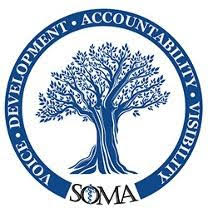› Forums › Fall 2020 Resolution Forum › Resolution: F-20-14: SUPPORTING MEDICAL ERROR TRANSPARENCY IN HEALTHCARE SETTINGS
- This topic has 0 replies, 1 voice, and was last updated 3 years, 7 months ago by
Valerie Lile.
-
AuthorPosts
-
-
October 4, 2020 at 9:39 am #3419
Valerie Lile
Keymaster1 WHEREAS, medical error is defined as “an act of omission or commission in planning or
2 execution that contributes or could contribute to an unintended result1, the failure of a planned
3 action to be completed as intended or the use of a wrong plan to achieve an aim2, or deviations
4 from the process of care, which may or may not result in harm3”; and
5 WHEREAS, medical errors may account for as many as 251,000 deaths annually in the United
6 States, making medical errors the third leading cause of death4; and
7 WHEREAS, studies of the causes of reported medical errors in primary care were analyzed and
8 found that errors related to diagnosis were the most common, closely followed by errors related
9 to delayed or inappropriate treatment5; and
10 WHEREAS, 13,932 medication errors were analyzed from 496 emergency departments between
11 2000 and 2004, which demonstrated that errors most commonly occur in the administration
12 phase, with the most common type of error being improper dose/quantity. Leading causes were
13 non-adherence to the procedure and poor communication6; and
14 WHEREAS, over half of all surgical errors are preventable7; and
15 WHEREAS, hospital faculty and resident physicians are inclined to report harm causing errors
16 during hypothetical simulations but very few report real errors8; and
17 WHEREAS, less than ten percent of medical errors are reported9, and
18 WHEREAS, patients want to be informed about any medical errors in the care provided to them
19 and the steps taken to minimize the harm in the future10; and
20 WHEREAS, some patients litigate simply in hopes of learning what happened and what
21 measures can be taken to prevent recurrence11; and
22 WHEREAS, making or witnessing a medical error can cause significant psychological
23 distress11; and
24 WHEREAS, not reporting medical errors results in missed opportunities for students to learn
25 about medical errors, ethics, and clinical reasoning13; and
26 WHEREAS, medical students who witness preceptors disclose medical errors are more likely to
27 disclose medical errors themselves14; and
28 WHEREAS, students report having increased confidence in their ability to having error-related
29 discussions with patients after medical error communication was added to the third-year
30 curriculum at New York Medical College (NYMC)14; and
1 WHEREAS, standardized patient assessments related to error disclosure for first year residents
2 have shown areas of improvement in communication skills and professionalism among
3 residents15; therefore, be it
4 RESOLVED, that the Student Osteopathic Medical Association (SOMA) supports medical error
5 transparency in healthcare settings.
6 RESOLVED, that the Student Osteopathic Medical Association (SOMA) encourages the
7 American Osteopathic Association to support medical error transparency in healthcare settings.References
- Grober, E., Bohnen, J. (2005). Defining Medical Error. Canadian Journal of Surgery. 48(1): 39-44. Retrieved from https://www.ncbi.nlm.nih.gov/pmc/articles/PMC3211566/
- Committee on Quality Health Care in America. (1999). To Err is Human: Building a Safer Health System. Institute of Medicine. Retrieved from https://documentcloud.adobe.com/link/track?uri=urn%3Aaaid%3Ascds%3AUS%3A629eea47-2997-4071-94e9-cd738590d506
- Grober, E., Bohnen, J. (2005). Defining Medical Error. Canadian Journal of Surgery. Retrieved from https://www.ncbi.nlm.nih.gov/pmc/articles/PMC3211566/#r14-9.
- Makary MA, Daniel M. (2016) Medical Error—The Third Leading Cause of Death in the BMJ. Retrieved from http://www.bmj.com/content/353/bmj.i2139.long.
- Sandars, J., Esmail, A. (2003). The Frequency and Nature of Medical Error in Primary Care: Understanding the Diversity Across Studies. Family Practice. Retrieved from https://academic.oup.com/fampra/article/20/3/231/514727/.
- Pham, J., Story, J., Hicks, R., Shore, A., Morlock, L., Cheung, D., Kelen, G., Provonost, P. (2011). National Study on the Frequency, Types, Causes, and Consequences of Voluntarily Reported Emergency Department Medication Errors. The Journal of Emergency Medicine. Retrieved from https://www.sciencecom/science/article/abs/pii/S0736467908003326.
- Chung, K., Kotsis, S. (2012). Complications in Surgery: Root Cause Analysis and Preventive Measures. Plastic Reconstructive Surgery. Retrieved from https://www.ncbi.nlm.nih.gov/pmc/articles/PMC3361686/.
- Kaldjian, L., Jones, E., Wu, B., et al. (2008). Reporting Medical Errors to Improve Patient Safety A Survey of Physicians in Teaching Hospitals. Archives of Internal Medicine. https://jamanetwork.com/journals/jamainternalmedicine/fullarticle/413721
- Brennan, T., Leape, L., Laird, N., Hebert, L., Localio, A., Lawthers, A., Newhouse, J., Weiler, P., Hiatt, H. Incidence of Adverse Events and Negligence in Hospitalized Patients. Results of the Harvard Medical Practice Study I. New England Journal of Medicine. Retrieved from https://www.ncbi.nlm.nih.gov/pubmed/1987460.
- (2011). Canadian Disclosure Guidelines Being Open with Patients and Families. Canadian Patient Safety Institute. Retrieved from https://www.patientsafetyinstitute.ca/en/toolsResources/disclosure/Documents/CPSI%20Canadian%20Disclosure%20Guidelines.pdf.
- Gallagher, T., Levinson, W. Disclosing Harmful Medical Errors to Patients: A Time for Professional Action. Archives of Internal Medicine. Retrieved from https://academic.oup.com/fampra/article/20/3/231/514727/.
- Martinez, W., Lo, B. (2008). Medical Students’ Experiences with Medical Errors: An Analysis of Medical Student Essays. Medical Education. Retrieved from https://doi-org.proxy.pnwu.org/10.1111/j.1365-2923.2008.03109.x
- Kaldjian, L., Jones, E., Wu, B., Forman-Hoffman, V., Levi, B., Rosenthal, G. (2007). Disclosing Medical Errors to Patients: Attitudes and Practices of Physicians and Trainees. Journal of General Internal Medicine. Retrieved from http://search.ebscohost.com.proxy.pnwu.org/login.aspx?direct=true&db=mdc&AN=17473944&site=eds-live
- Halbach, J., Sullivan, L. (2005). Teaching Medical Students About Medical Errors and Patient Safety: Evaluation of a Required Curriculum. Academic Medicine. Retrieved from https://www.ncbi.nlm.nih.gov/pubmed/15917366.
- Raper, S., Resnick, A., Morris, J. (2014). Simulated Disclosure of a Medical Error by Residents: Development of a Course in Specific Communication Skills. Journal of Surgery Education. Retrieved from https://www.sciencecom/science/article/abs/pii/S1931720414001986.
Submitted by:
Tavleen Aulakh, OMS III – Pacific Northwest University of Health Sciences COM
James Kramer, MA, OMS III – Pacific Northwest University of Health Sciences COM
Jenna Seeley, MA, OMS III – Pacific Northwest University of Health Sciences COM
Delaney Tognolini, MA, OMS III – Pacific Northwest University of Health Sciences COMAction Taken:
Date:
Effective Time Period: Ongoing
-
-
AuthorPosts
- The forum ‘Fall 2020 Resolution Forum’ is closed to new topics and replies.
